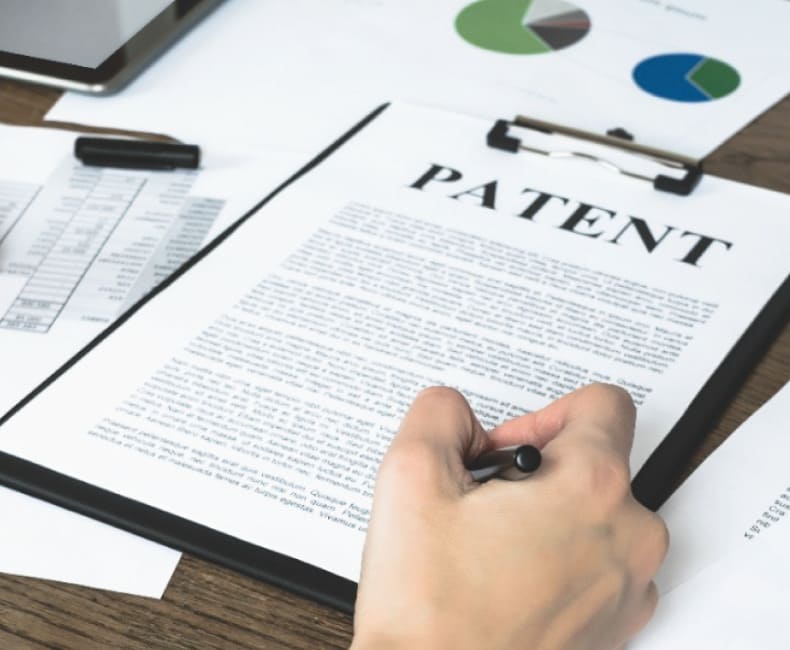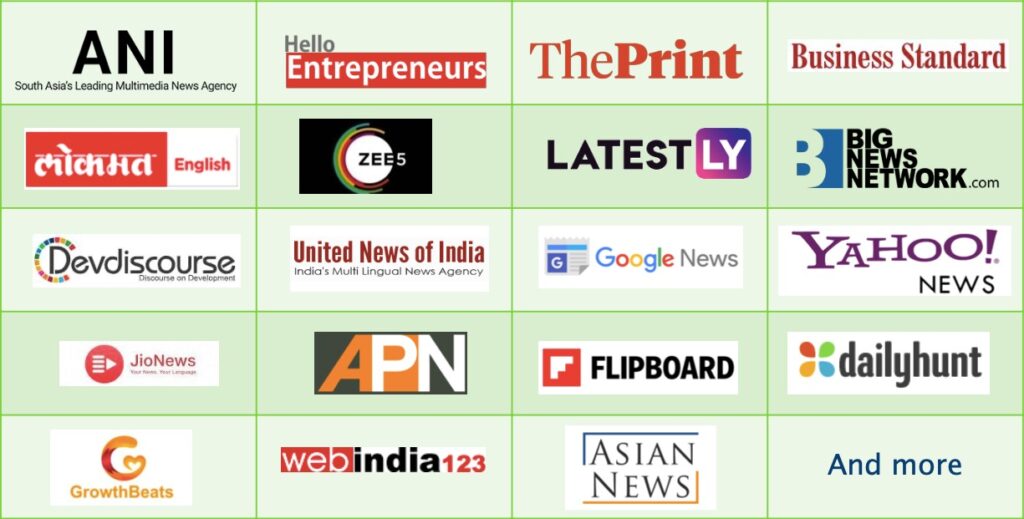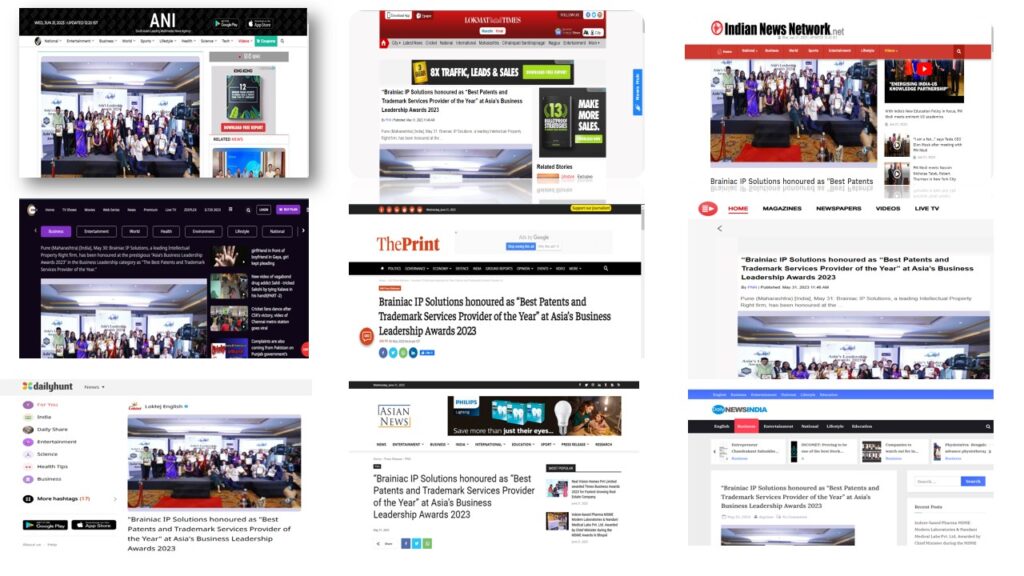- Home
- About Us
- patent
- Trademark
- Insights
- Services
-
-
- Patents
- Patent Filing & Prosecution Services
- Patenting in USA
- Freedom to Operate Search
- Patentability Search (Prior Art )
- PCT Application Drafting & Filing
- Patent Search, Drafting & Filing in USPTO
- Infringement Analysis
- Patent Landscape
- Patent Valuations Services
- Patent Drafting Services
- Patent Filing Services
- Responding to Office Action
- Patent Support Outsourcing Service
- Patent Search Outsourcing
- Pre Grant Opposition
- Patent Validity/Invalidity Search and Opinion
- IP Audit
- Patents
-
- Blogs
- Case Studies
- Contact
- enquiry@brainiac.co.in
- Pune: +91-20-711-71800 Mumbai :+91-22-48934806 Pune :+91-9112299453
Patent Search, Drafting & Filing in USPTO
Trusted by over 1000+ inventors ,
worldwide for Patenting Process.


- Save up to USD 2000 on Patent Analytics & more than USD 5000 on Patent Drafting.
- Our Hour Rate 30-40USD/hr.
- Invest your Saving into marketing your product.
- Enter your market first, we can file Provisional in 10 days.
- Assitance in Prototyping.
- All filing through US Attorney, Cost-Saving as the operations are done from India.
- Sign NDA (Non-Disclosure Agreement) before handing over the information to us.
- Get Free Access to Videos on the Patent procedure, Patentability search, Provisional patents and may more.
- Transparency in the bill hours and Stage wise billing.
- Advanced docketing system to meet deadlines.
- Easy access to various status reports of your patent through unique ID and password.
- Free enrolment for newsletters and informative blogs.
- Free listing (with prior approval) of your patents/product for selling/licensing on IPBASKET.COM
USPTO FILING PROCEDURE
STEP 1: Patentability search_ It is conducted to check whether the patent is novel or not, the patent ischecked in various databases.
STEP 2: After knowing that the patent invention is novel, the drafting of the patent will becarried out either its PROVISIONAL APPLICATION( Can be drafted with broader scope ofinvention)/ COMPLETE APPLICATION( The additional claims section has to be incorporatedin the specification and the scope of the invention to be made narrower), Once the draft is readythe application is filed with the USPTO if initially an Provisional Application is filed then it ismandatory to file an Complete application with 12 months from the date of filing of Provisionalapplication.
STEP 3: The further step after filing the application with USPTO, the patent gets published inUSPTO website after the time period of 18 months from the date of filing.
There is an exception in USPTO that the applicant can prevent the application from beingpublished till the Grant by filing a request with Form PTO/SB/35
STEP 4: Request of examination has to be filed within time limit of 6 months after publicationof the patent, Expedited or accelerated examination for an application can be filed by filing aForm PTO/SB/424 (CERTIFICATION AND REQUEST FOR PRIORITIZEDEXAMINATION UNDER 37 CFR 1.102(e), after which within 12 months the examinationreport is issued

STEP 5: Non final office action: Notification issued after the application undergoesexamination by the examiner for fulfilment of all the formal requirements of an application.The deadline for filing the response to Non final office action is 3 months from date of mailingand can be extended up to 6 months with surcharge (Additional fees).
STEP 6: Final Office action: Notification issued after the examination by the examiner if theyfound any discrepancy in the draft of the application and the deadline for the same is 2 months,if the response not filed within 2 months, then notice of advisory action is issued by the USPTO.Final office action response has to be filed along with RCE (Request for Continuedexamination)
STEP 7 : The patent undergoes in depth examination by the examiner
STEP 8 : USPTO issues a Notice of allowance is issued if the patent is accepted and can begranted for its novel feature.
STEP: 9 Payment of the issue fees with the USPTO has to made within time limit of 3 months
STEP: 10 USPTO upon payment grants the patent
STEP 11 : Applicant has to pay the renewal fees at 3.5 years, 7.5 years and 11.5 years.
Patent Search, Drafting & Filing in USPTO
Patent drafting is a very crucial aspect of the entire patent application process because on your application hinges the entire success of your patent. Your patent application defines the boundaries of your product or the invention you are working on. Therefore, at Brainiac IP Solutions we take the drafting of your patent application very seriously.
A critical thing about your patent application is that too narrow a scope increases competition and wider boundaries may destroy the patentability of your patent. Many a time, building and maintaining a good team requires more effort, and consistent output from such a team is a problem. Precisely this is the reason why companies of all dimensions prefer to outsource patent application drafting work to law firms and not to KPOs with clear expectation of quality and almost no burden of training and sustaining a big team.

Check out our Profile Video
The United States Patent and Trademark Office (USPTO) has specific requirements for drafting a patent application.
Here are some key requirements:
1. Written Description: The patent application must contain a written description of the invention that is clear and complete enough so that a person skilled in the relevant field can understand and make the invention.
2. Claims: The application must include one or more claims that clearly and specifically define the scope of the invention. The claims should be supported by the written description and should not be overly broad or vague.
3. Abstract: The application must include an abstract that summarizes the invention in a brief and concise manner.
4. Drawings: If the invention is capable of being illustrated, the application must include drawings that are clear and of sufficient quality to enable a person skilled in the relevant field to understand the invention.
5. Formal Requirements: The application must comply with various formal requirements, such as using appropriate margins, font sizes, and spacing, and including a declaration or oath by the inventor.
6. Disclosure of Prior Art: The application must disclose any prior art that is known to the inventor, as well as any publications or public use of the invention that occurred more than one year before the filing date of the application.
7. Enablement and Best Mode: The invention must be enabled by the written description, and the inventor must disclose the best mode of carrying out the invention known to them.
8. Overall, we can ensure that your patent application meets all USPTO requirements and provides the best possible protection for your invention.
The United States Patent and Trademark Office (USPTO) has several requirements for an invention to be considered patentable.
These requirements are:
- Novelty: The invention must be new and not disclosed or described in a prior art reference globally. Prior art includes any publicly available information, such as patents, scientific articles, and other published materials.
- Non-obviousness: The invention must not be obvious to a person having ordinary skill in the relevant field of technology. This means that the invention must not be something that someone skilled in the art could easily come up with based on what is already known.
- Utility: The invention must have a useful purpose. This means that it must be capable of being used for some practical purpose.
- Patent Eligible Subject Matter: The invention must be patentable subject matter. This includes processes, machines, manufactures, and compositions of matter. However, there are some exceptions to patent eligibility, such as laws of nature, natural phenomena, and abstract ideas.
- Written Description and Enablement: The invention must be described in sufficient detail in the patent application so that a person having ordinary skill in the relevant field can make and use the invention without undue experimentation.
- Best Mode: The inventor must disclose the best mode of carrying out the invention known to them at the time of filing the patent application.
We can help you in validating patentabilty of your invention.
Our Satisfied Clients
Michael Salemi

I would like first to thank you for the work you provide to us. Indeed, the way you worked with our team in India is very good and lean. I am pleased with the quality of your patent drafting.
Mr. Jayesh Dubey

The team Brainiac works very professionally and are very responsive. They deliver the work within time. Also, they clear all the queries related to work in very proficient and helpful way.
Featured on


